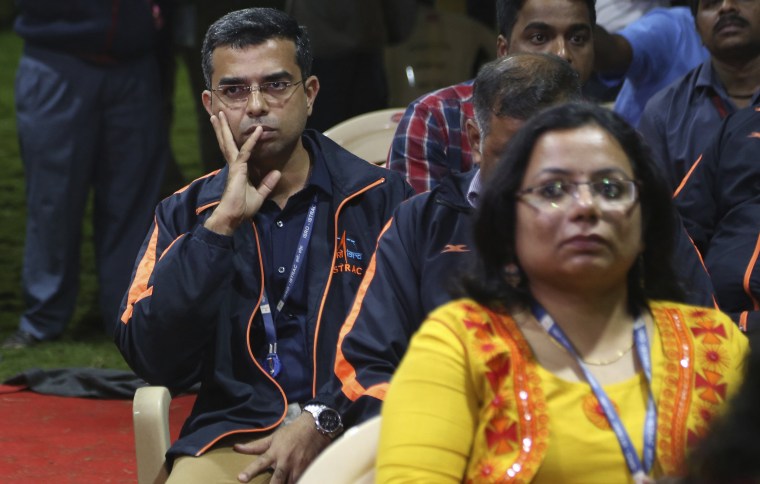India’s prime minister appeared to acknowledge that a lunar lander had failed on Friday, delivering an address to the nation that emphasized lessons learned from the mission and the hope for a brighter future.
"We came very close. But, we will need to cover more ground in the times to come," Prime Minister Narendra Modi said in an address Saturday morning, thanking the scientists behind the effort to try to set the Chandrayaan-2’s Vikram lander on the Moon’s south pole.
India's space agency lost contact with the lander Friday. It appeared to be on its way to landing before images on a computer screen appeared to freeze.
Then, an official with the Indian Space Research Organization made a solemn announcement.
"The communications from the lander to ground station was lost. The data is being analyzed," ISRO chief Kailasavadivoo Sivan told mission control.

A successful landing would have made India one of four nations to put a craft on the moon and the first to touch down near the lunar south pole.
Only the U.S., Russia and China have landed spacecraft on the moon. An attempt by Israel in April failed.
Modi called the effort the most ambitious for the country's space program, saying "we are full of confidence that when it comes to our space program" and "the best is yet to come." He said the experience of launching the spacecraft and trying to land it was as important as the final result.
"I can proudly say that the effort was worth it, and so was the journey," he said. "Our team worked hard, traveled far, and those teachings will always remain with us. ... There will be a new dawn and a brighter tomorrow very soon."
The Chandrayaan-2 orbiter launched into space on July 22 and has been circling the moon since Aug. 20.
The 3,200-pound lander was carrying a six-wheeled rover named Pragyan, as well as a suite of scientific instruments.
Plans called for the Vikram lander to touch down on a relatively flat plain between two craters. Like all landings on other celestial bodies, the effort was called tricky because of the complicated sequence of rocket firings needed to bring a spacecraft slowly to the surface.
In a press briefing in August, ISRO chairman Sivan called these sequences the mission's “most terrifying moments."
Modi said Saturday that regardless of the outcome, the scientists working on the mission had "made an incredible contribution to national progress." He urged them to "stay steady, and look ahead."